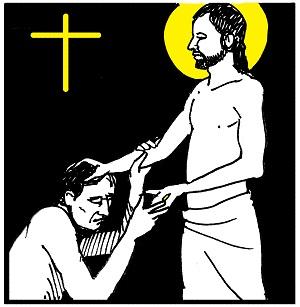
“Unless I see the mark of the nails in his hands and put my finger into the nail marks and put my hand into his side, I will not believe” (John 20:25).
Second Sunday of Easter (Mercy Sunday)
Acts 2:42-47; Ps118; 1 Pt 1:3-9 ; Jn 20:19-31
The story of Doubting Thomas was added to John’s Gospel to reassure believers two generations after the fact that the resurrection was real and also part of a larger mystery of salvation that was just as accessible to them as it was to the first witnesses. Therefore, this story is also for us. It encourages us to bring our doubts and questions into our formation as Easter people.
Thomas asks for tangible proof that the crucified Jesus had appeared alive to the other Apostles the previous Sunday. Make no mistake about it, he demanded to put his finger in the nail holes in Jesus’ hand and his hand into the wound in his side. But Thomas’ insistence on physical evidence gives way to an overwhelming sense of awe in the presence of the risen Jesus. He can only utter “My Lord and my God” in response to a theophany, a profound encounter with the divine mystery of God incarnate. Like the experience of Saul on the road to Damascus, Thomas’ entire way of grasping reality is flooded with insight that can only lead to worship.
The Thomas story is an invitation to us to open our minds and hearts to the same experience. John’s entire Gospel is an unfolding series of signs that open people to the presence of I AM, the divine name revealed in Jesus. This appearance story also contains the gift of the Spirit as Jesus breathes on his Apostles, recalling God’s act of Creation. They are the new Creation. Their mission is now to go forth and heal the first creation, broken and distorted by sin. They are given the power to cleanse the sinfulness that obscured the original image and likeness of God.
The Easter story stops short if it is only about Jesus. The full story is the mystery of his presence in us and our mission to extend his redemptive transformation in time and place. With every breath we take, we share his healing word. Even our wounds are joined to his wounds as we extend his healing touch to the suffering lives we encounter. Our doubts and questions enter the dialogue of real evangelization as we encounter the skepticism that demands proof that all this talk of love and mercy is for real. We must show that it is by the way we live.
On this Second Sunday of Easter, we gather to share the Scriptures and break the bread. We encounter the wounds of Jesus in one another, and we are filled with awe and gratitude that we have been invited to know God alive and active in our world through the risen Jesus, alive and active in us.








